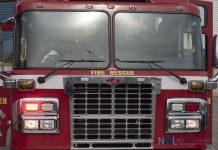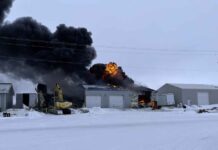
THUNDER BAY – Fire safety in Ontario’s northern Indigenous communities presents challenges.
Amber’s Fire Safety Campaign was endorsed by Chiefs-in-Assembly in May, 2016 to promote fire safety and awareness in all Nishnawbe Aski Nation communities.
The campaign is named in memory Amber Strang, an infant just five months old, the youngest victim of the March 29, 2016 house fire in Pikangikum First Nation that claimed nine lives, including three generations of Amber’s family.
The campaign will help end the countless tragedies that have devastated our communities by allowing us to work with Tribal Councils, various levels of government, municipal fire departments and other agencies to coordinate efforts to improve fire safety and fire-fighting services in all of our communities to prevent further loss of lives.
Goals of the Campaign
Long-term goals of Amber’s Fire Safety Campaign include:
- Development of partnerships for the campaign.
- Increasing fire safety awareness and education, including support for certification in wood burning systems and fire prevention services.
- Development of a comprehensive plan for fire protection including fire-fighting equipment, services and infrastructure including water distribution systems and fire hydrants.
Pillars of the Campaign
1. Education
In addition to providing fire prevention materials, community members must be educated in the following areas:
- Proper installation and maintenance of smoke detectors.
- Best practices of fire prevention including proper maintenance of residential wood burning system.
- Fire prevention education for teachers and students in community schools.
2. Training
Coordination of certification opportunities with those who offer wood-energy products and installation and maintenance services to NAN communities, and to those who conduct inspections of wood-burning systems on-reserve.
3. Partnerships
Developing partnerships with various stakeholders and organizations in order to sustain the campaign.
4. Capacity Building
Make fire prevention a consistent priority at both the Tribal Council and community level.
Campaign Logo
The Amber’s Fire Safety Campaign logo was designed by Caiden Gagnon, an elementary student from Johnny Therriault School in Aroland First Nation.
Fire Safety in NAN First Nations
Fatal house fires are all-too common in NAN First Nations and the chronic lack of firefighting services and substandard housing is a deadly combination. House fires are especially devastating in remote communities where overcrowding is the norm and entire families are left homeless every time a home is lost.
A 2007 study by Canada Mortgage Housing Corporation Fire Prevention in Aboriginal Communities found that people living in First Nations are 10 times more likely to die in a house fire than people in the rest of Canada.
Mishkeegogamang First Nation has lost 30 members to house fires in the past 35 years.
A 2008 fire in Kashechewan First Nation left a family of 11 homeless after destroying the home of the late NAN Elder George Wesley, the father of Ricardo Wesley, who died in a 2006 fire with Jamie Goodwin. An inquest into their death, the Kashechewan Inquest, garnered national attention on the inadequacies of community safety and firefighting resources in remote First Nations.





